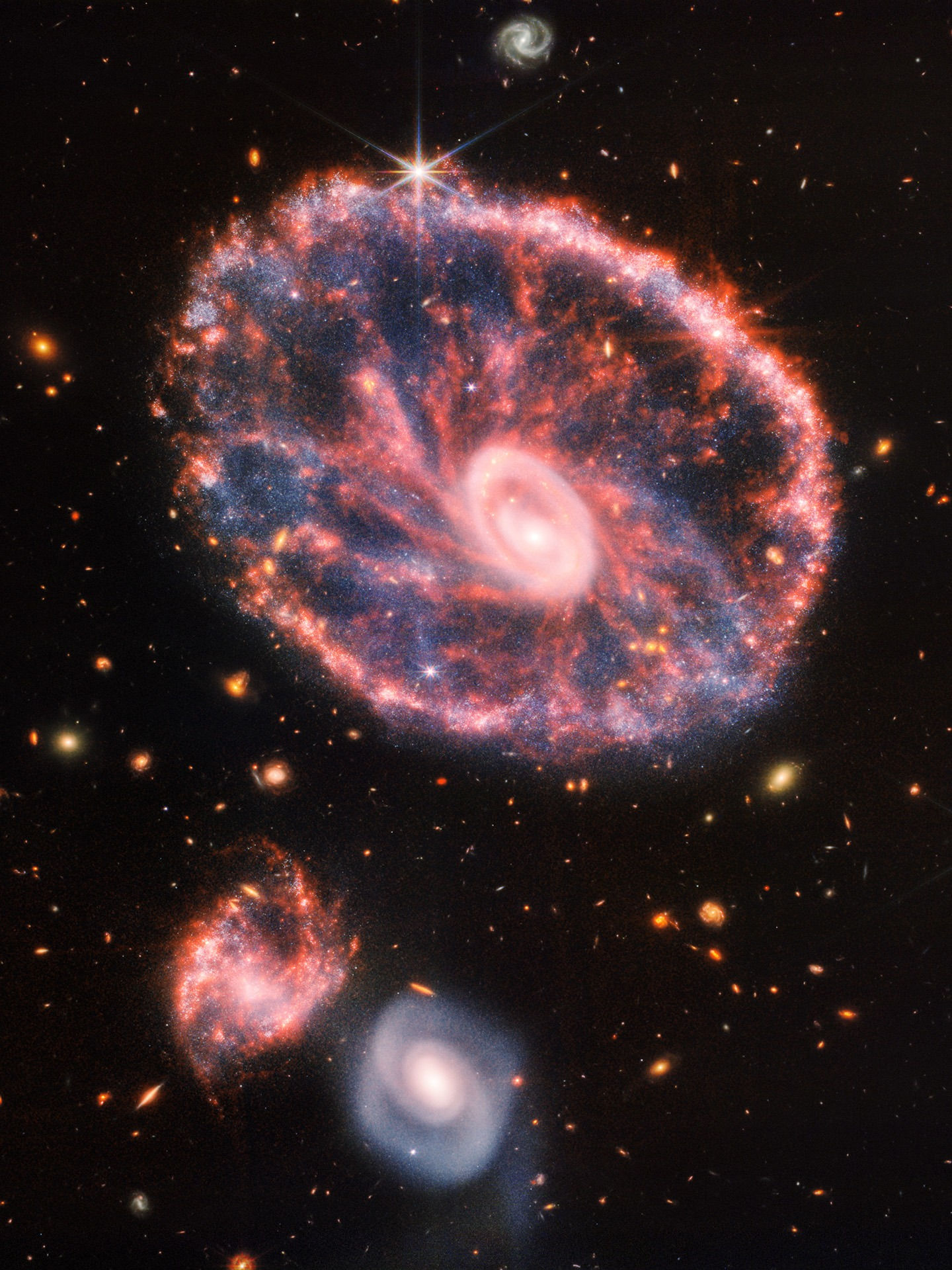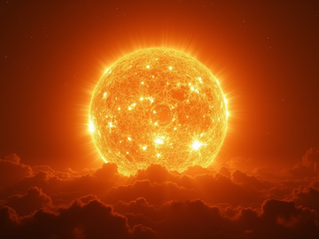Why Cancer Based Biological Immortality is The Solution. A Hypothesis That Will Shock Scientists.
- UnitedEarth
- Feb 6, 2024
- 7 min read
Updated: Mar 2, 2024
Abstract:
We call the hypothesis "ordered telomeres." This scientific article provides a comprehensive review of historical and contemporary failed anti-aging methods, including the challenges associated with conventional approaches. It introduces the "Cancer-Based Immortality" hypothesis, proposing a controlled use of cancer cells to maintain telomeres for potential biological immortality. The article emphasizes the benefits of this approach, contrasting it with traditional anti-aging ideas and acknowledging the challenges associated with David Sinclair's theories. The scientific nature of cancer, specifically the role of telomerase in achieving "immortality," is explored in detail. Additionally, the unique properties of HeLa cells, derived from Henrietta Lacks, are integrated to illustrate the potential of controlled cell division for immortality. Our main focus is on the telomerase and telomeres functionality, which is an already well established proven science, from the work of previous scientists. The focus here is not on the cancer itself, it is mostly on the mechanism of telomerase, which is not different at all from what cancer does. Οur predictions show that this is a fatal weakness of aging, making the realization of biological immortality inevitable, at least if is done right, that is by removing the unregulated activity of telomerase, which is a hallmark of cancer. In fact, many cancer cells are characterized by high levels of telomerase activity, which allows them to divide indefinitely and form tumors.

Introduction:
The pursuit of immortality has witnessed various attempts, from ancient elixirs to modern pharmaceutical interventions. This article explores the limitations and shortcomings of historical and contemporary anti-aging methods, setting the stage for a novel and unconventional hypothesis. Basically, this article might show a much more practical and faster way to achieve immortality compared to David Sinclair's methods and discoveries. David targets at our biological software, while we target our biological hardware directly to trick our bodies to remain in eternal youth. But who knows? Maybe David Sinclair's discoveries could improve the cancer based immortality method. In our case, we try to make it possible at least by the year 2030, but we need at least scientists that are interested, try our proposal in lab testing, take results and see if our groundbreaking ideas are true or not.
The David Sinclair Method:
David Sinclair, a prominent geneticist and professor at Harvard Medical School, has proposed anti-aging theories centered around activating sirtuins and utilizing molecules like NAD+ to rejuvenate cells. While promising, the complexities of these theories and the need for advanced technologies, such as artificial general intelligence (AGI), raise questions about feasibility and practical application. We need basically AI that simulates millions or billions of chemicals, that could take us 1000 years to discover, but with AI instead, we will do it in a day! That's what David Sinclair claims at least! Here's a video : https://www.youtube.com/watch?v=UXfHEe58cc4 which is a short 2 minute explanation. The original explanation which is almost 30 minutes instead, you will find it here: https://www.youtube.com/watch?v=GP0mbgvH550

The Nature of Cancer and the Key to Immortality:
Cancer cells are described as "immortal" due to their ability to continue multiplying without end, a phenomenon attributed to the enzyme telomerase. Telomerase prevents telomeres, the ends of chromosomes, from shortening. In normal cells, telomeres gradually shortens with each division until they become too short to protect the chromosomes, leading to cell death. Cancer cells, however, reverse this process by lengthening their telomeres, achieving a state of "immortality." This claim is supported by many science sources, like government level articles and peer reviewed science articles. The links:
Hayflick limit, a key to immortality:
The Hayflick limit, or Hayflick phenomenon, is the number of times a normal human cell population will divide before cell division stops. This limit is primarily due to the shortening of telomeres, which are protective regions at the ends of chromosomes. Each time a cell undergoes mitosis, the telomeres on the ends of each chromosome shorten slightly. Cell division will cease once telomeres shorten to a critical length.
The concept of the Hayflick limit was advanced by American anatomist Leonard Hayflick in 1961, at the Wistar Institute in Philadelphia, Pennsylvania. Hayflick demonstrated that a normal human fetal cell population will divide between 40 and 60 times in cell culture before entering a senescence phase. This finding refuted the contention by Alexis Carrel that normal cells are immortal.

The ageing of cell populations appears to correlate with the overall physical ageing of an organism. The Hayflick limit is a concept that helps to explain the mechanisms behind cellular aging. The concept states that a normal human cell can only replicate and divide forty to sixty times before it cannot divide anymore, and will break down by programmed cell death or apoptosis.
Benefits of "Cancer-Based Immortality":
Bypassing the Hayflick limit - the only way to achieve this is by activating the telomerase. The activation of telomerase can indeed lead to the extension of telomeres, which in turn can potentially enable cells to divide indefinitely. However, this indefinite division of cells is a characteristic of cancer cells. Cancer cells often have activated telomerase, which allows them to continue divide and grow in an uncontrolled manner. This uncontrolled growth and division can lead to the formation of tumors and can cause serious damage to the body. It’s a double-edged sword because it can also lead to uncontrolled cell growth and division, a hallmark of cancer. This is one of the reasons why telomerase activation is not currently used as a method for extending human lifespan or achieving ‘immortality’.
Destroying 99% of cancer cells.
It was impossible to bypass Hayflick limit with safety for many years, but today new discoveries give us hopes that the technology that will give us biological immortality even without any AGI system or super AI systems, is already theoretically here and not in the far future.
Scientists have discovered a 99 percent cure for cancer cells, utilizing a method one million times more potent than previous approaches, with successful outcomes observed in both laboratory settings and mice. The scientists claimed "They are more than one million times faster in their mechanical motion than the former Feringa-type motors, and they can be activated with near-infrared light rather than visible light." Another claim here: By rupturing the membrane of the cancer cells, these molecular versions of a jackhammer were shown to destroy 99% of human melanoma cells grown on lab cultures. When used to treat live mice that had human melanoma tumors, half of the 10-strong group were cancer-free after seven months.

The use of near-infrared light is important because it enables scientists to get deeper into the body. Cancer in bones and organs could potentially be treated without needing surgery to get to the cancer growth. In tests on cultured, lab-grown cancer cells, the molecular jackhammer method scored a 99 percent hit rate at destroying the cells. The approach was also tested on mice with melanoma tumors, and half the animals became cancer-free. The sources: 1.https://m.tamu.edu/facultystaff/tamunews/detail?feed=tamu_inthenews&id=10abc436-7387-5bef-bc7b-80514a2c3483
2. https://www.optica-opn.org/home/newsroom/2023/december/molecular_jackhammers_destroy_cancer_cells/
Bypassing the Hayflick limit, or cancer based immortality:
Curing cancer, could mean curing also aging, because based on our understanding of the consequences of telomerase activation on telomeres and the perpetual nature of cell division, the activation basically triggers the same mechanism, like the characteristic of cancer, which is the growth of cells instead of the shortening mechanism, which occurs naturally in our telemeres. Basically without the control of the telomerase activation on cells, we could die in exactly the same way cancer does so often. Therefore, while preventing the telomere shortening might seem like a way to achieve cellular immortality, it's actually a double-edged sword that can also increase the risk of cancer. Disease that fights disease in a loop, is much more simple and almost free. Sometimes complex problems require simple creative solutions.

In essence, if the cancer cure proves effective in human applications, we could potentially leverage it for the preservation of our telomeres. By activating telomerase within our telomeres, cellular divisions would commence indefinitely. This is precisely where the cancer cure could be strategically employed to prevent uncontrolled growth. The resultant effect would be the establishment of "ordered telomeres" – striking a delicate equilibrium between short and excessively long telomeres, fostering perpetual youthfulness. A precision-focused strategy would be instrumental, ensuring a sufficient number of cells remain within our bodies upon telomerase activation, thereby maintaining the delicate balance. Embracing a paradigm where a disease combats another ailment in a continuous loop appears to be the sole path to victory, with both working synergistically to sustain our existence.
Safety measures:
While this cancer based hypothesis might sound the most fastest, practical and realistic approach, we need experts to test this hypothesis in terms of: How fast should we take the cure to prevent our organism from collapsing?. Is every 3 months or 6 months the safety limit that makes it mandatory to use again the cure of cancer cells against unlimited telomerase activation of cells?.
The timeline for the appearance of damage due to telomerase activation can vary greatly, because they behave exactly like cancer does. That means we could see bare-minimum the damage to appear in 6 to 7 months later. While some changes might be observed within a few months, it’s also possible that changes might not become apparent until much later, even 1 or 2 years later. This variability is due to a multitude of factors, including the type of cell, the level of telomerase activity, and the individual’s overall health. It’s a complex process and is a subject of ongoing research. It’s also worth noting that early detection and intervention are key in managing and treating many forms of cancer. That's good news, the cancer cure rate speed is faster than the damage based on the research, which could offer a balanced approach to achieve what we call here "ordered telomeres" without causing death and finally achieving biological immortality.

Economically practical
Curing aging could prove to be extremely cost-effective, despite the initial appearance of high expenses associated with the price of cancer cure. According to David Sinclair, he said "aging is the father of all diseases," so curing aging, is the achievement of curing all diseases simultaneously, which would result in substantial economic savings. This approach stands on evidence-based research that quantifies the potential economic benefits of achieving biological immortality, even with an individual gaining one additional year of healthy life. The research says : The cited research underscores the economic impact, stating: "We demonstrate that a deceleration in aging leading to a one-year increase in life expectancy is valued at US$38 trillion, and with a ten-year extension, the value rises to US$367 trillion. Ultimately, as advancements are made in enhancing the aging process, the accrued value of further improvements becomes increasingly significant." This highlights the potential economic windfall associated with progress in the field of age-related health improvements. Original source: https://www.nature.com/articles/s43587-021-00080-0
Conclusion:
In conclusion, the "Cancer-Based Immortality" the hypothesis of "ordered telomeres", represents potentially a revolutionary approach to addressing aging and achieving biological immortality. The article calls for further exploration, collaboration with experts, and rigorous testing to validate the hypothesis's potential, offering a unique and practical perspective to the complex challenges associated with traditional anti-aging methods.












































































































Comments